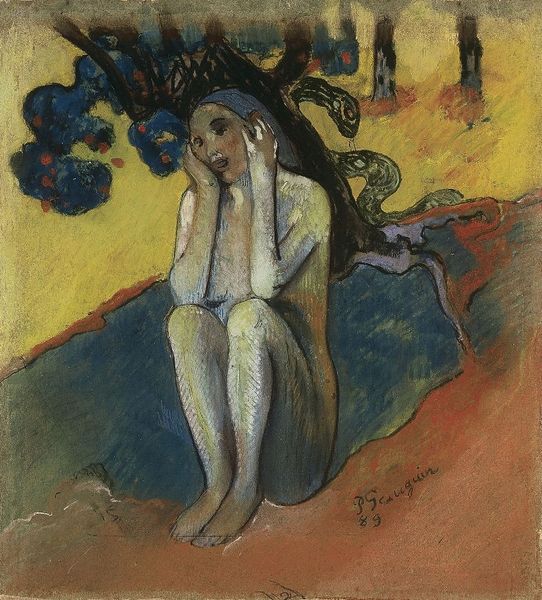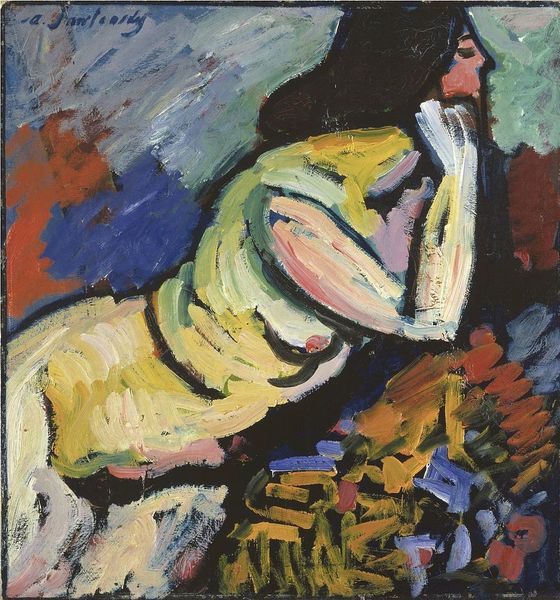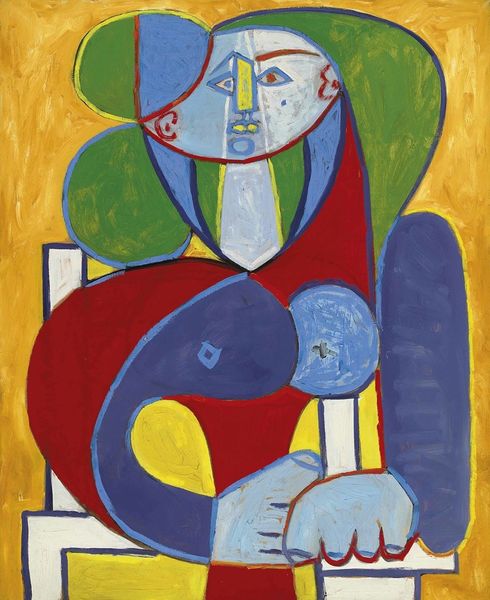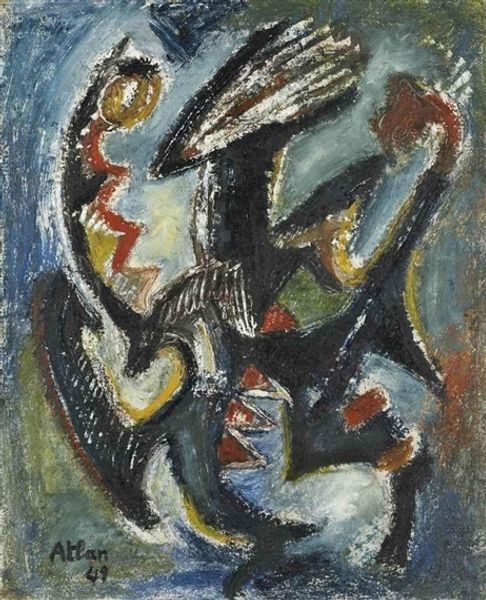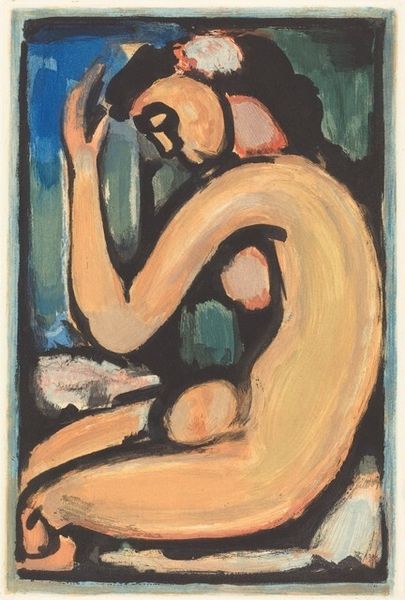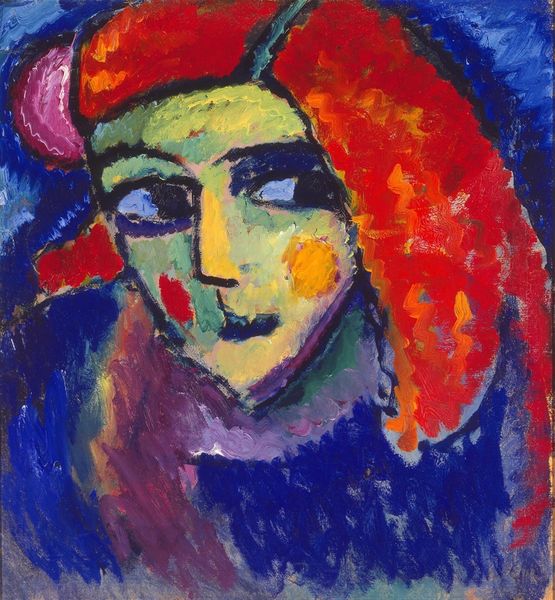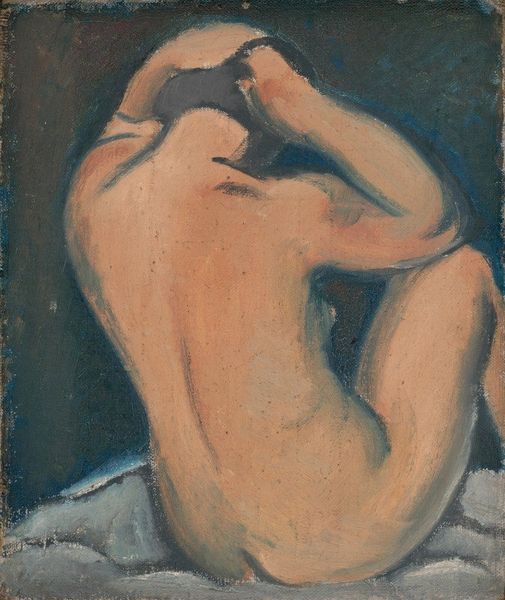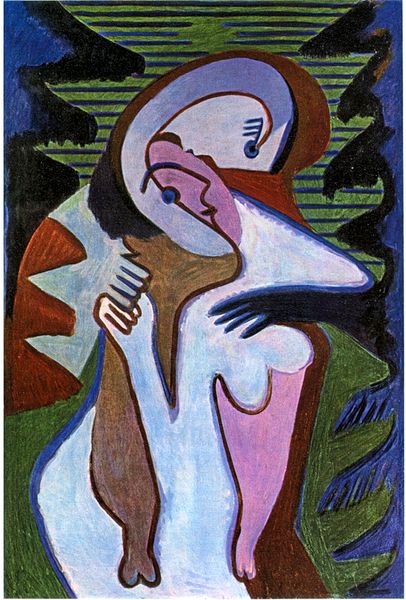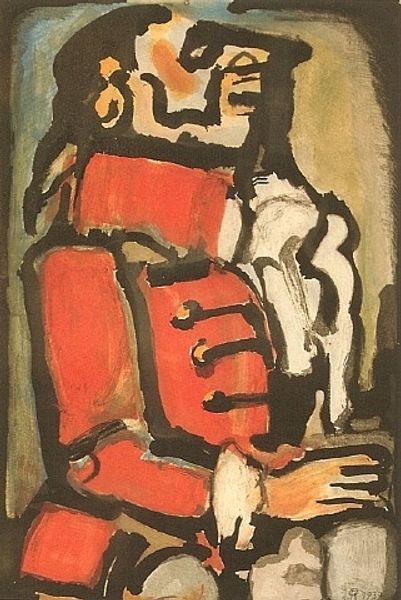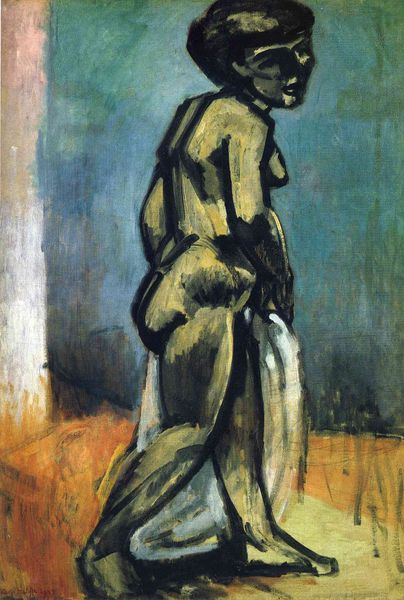
Copyright: Public domain US
Editor: Here we have Picasso’s "Motherhood," painted in 1901. It's an oil on canvas work. I'm immediately struck by the colors—this cool palette of blues and yellows is far from what I usually associate with mother-and-child imagery. It feels a bit melancholic, almost ghostly. How do you interpret this work? Curator: Well, aren’t you perceptive? It *is* haunting, isn't it? Consider this wasn’t sunny, post-war suburbia. 1901, his blue period was just starting… This wasn't just some technical display, but a felt need to talk about hardship, about his friends dying around him of tuberculosis. The chill we see on that canvas – I swear, it still whispers of hospital corners. What about the Fauvist colors here; did you catch that tension? I’m curious about why this palette, so connected with pleasure and happiness, makes you think "ghostly." Editor: Yes! It’s that strange contrast of a traditionally warm theme – motherhood – rendered in such cold tones. The Fauvist colours amplify this dissonance, rather than softening it. So you're saying the 'ghostly' feeling is linked to a deeper understanding of his Blue Period? It’s the social commentary leaking into the tenderness? Curator: Precisely! That tension, that dissonance, *that's* where the real beauty lies for me. It acknowledges that even love can be shadowed by hardship. And with a title like "Motherhood," we have to remember the other mothers that the historical narrative too easily forgets, huh? The ones struggling, the grieving, the ones history paints out! Editor: I hadn’t really considered that – the absent mothers. Wow, that reframes the piece so much for me. Curator: It's amazing, right? A painting that seems to offer a nurturing symbol is speaking volumes more if we actually listen. A heartbreaking tenderness and not simple one at all.
Comments
No comments
Be the first to comment and join the conversation on the ultimate creative platform.


